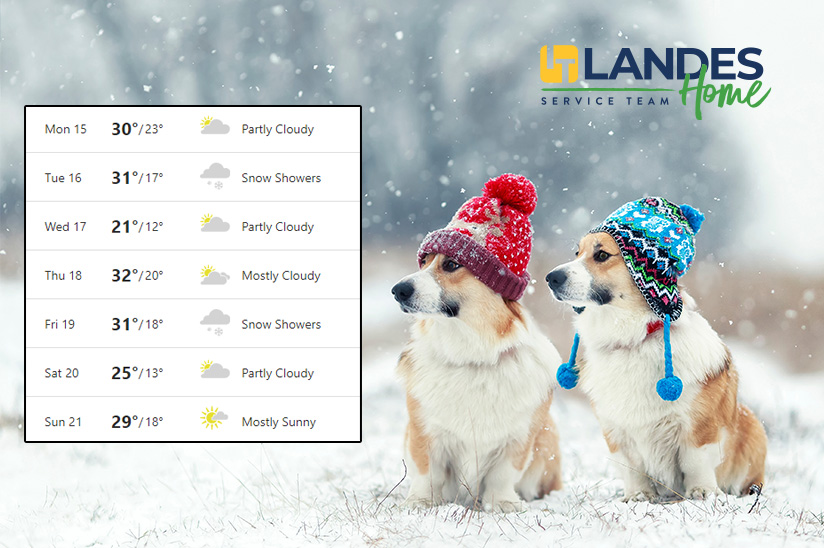Temperatures are going to be low in Bucks and Montgomery Counties this winter! IT Landes…
Water leaks in your home can come with a costly price tag if they’re not caught early and repaired quickly. Faucets, toilets, tubs, showers, dishwashers, washing machines, water heaters—a lot can go wrong around the house, but there are things you can do to minimize the possibilities.
Know where leaks can happen. A pipe can break at any time, but a pipe break is actually not the most common cause of a leak. One area that leaks can frequently occur is at the seals around water connections to appliances. Over time, these seals can wear out and slow leaks can start. And because these seals are often out of sight, leaks can sometimes go on for a long time before they’re noticed. Points where your appliances connect to water hoses and the water hoses themselves can also fail and cause water to start flowing. In addition to the obvious places like showers, toilets, sinks, and washing machines, don’t forget some of the less obvious locations, such as sump pumps and whole house humidifiers. Anywhere there’s water, there’s potential for a leak.
Make visual inspection part of your home maintenance routine. Whether it’s pipes, hoses, or drains, most plumbing in your home is kept out of sight and for good reason. It’s not attractive to look at, but because it’s hidden, out of sight means it’s also usually out of mind. That’s why it’s a good idea to make visual inspection of these areas a routine part of your home maintenance plan. You can do this yourself by opening up those cupboards and crawlspaces and taking a look around to check for leaks or evidence of water staining, or you can have a professional plumber do it as part of a preventive maintenance plan.
Invest in preventive measures. In addition to conducting a visual inspection and knowing where to look, there are several other preventive measures you can take to help protect your home from water leaks and damage.
Smart Water Leak Detectors
A smart water leak detector is a device that installs next to your water-using appliance or potential leak area and alerts you with both a local alarm and a notification to your smart phone when a water leak is detected. This allows you to take immediate corrective measures even if you’re not at home to hear the alarm.
Auto Shut-Off Valves
An auto shut-off valve can be installed on any appliance that uses water. When it detects a leak, it automatically shuts off the water supply by closing the valve. It then sounds a local alarm to alert the homeowner to the location of the leak so it can be repaired.
Drain Pans
Many water heaters have drain pans included with installation, but you should check to make sure your water heater has one. A drain pan, sometimes called a drip pan or a tank pan, is a tray seated under the water heater to catch water that could potentially leak out of the tank. A drain pan can fail to stop a leak if it doesn’t include a line to route the leaking water into a drain. A properly installed drain pan prevents damaging water leaks by draining the water to an appropriate run-off location. Make sure your tank has a drain pan and that it’s properly drained, so if tank failure does occur, you have time to intercept the situation and get it under control before flooding starts.
Knowing where leaks occur, conducting routine visual inspections of your home’s plumbing, and installing leak detectors and other preventive measures around your appliances is a great way to protect yourself from costly leaks and water damage inside your home. It can also give you added peace of mind when you’re not home.
To learn more about leak detection and prevention or our many other plumbing services, call IT Landes at 215-256-4221 or request an appointment today.


